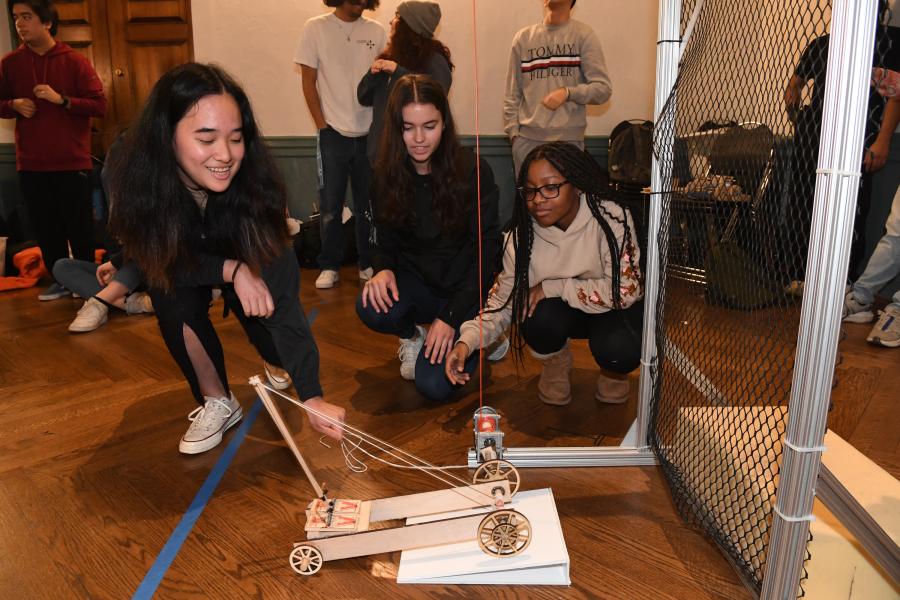
Credit: Jim Burger for Johns Hopkins University
Set up, drop, and go: Engineering students compete in design competition
The annual contest brings together first-year mechanical engineering students vying for victory in a race of their small homemade vehicles
By Sydney Portale
/ Published Dec 13, 2022Teeming with energy and anticipation, first-year mechanical engineering students gathered last week to compete in the annual MechE Freshmen Design Competition, held in the Great Hall on the Homewood Campus.
Teams of two or three students went head-to-head over multiple rounds to see whose vehicles would travel the fastest and the farthest. The vehicles were powered by potential energy released from the dropping of five-pound weights. Charging devices, also designed by the students, transferred the energy from the weights to the vehicles, which then converted it into mechanical kinetic energy, propelling them (at least in theory!) across the room.
Each team had two minutes to get its charging device and vehicle hooked to the rig, reset the weight, and prepare for competition. In the single-elimination competition, winners advanced to the next round of the bracket; losers were eliminated but are still hoping for a good grade.
Steven Marra, associate teaching professor in the Whiting School of Engineering's Department of Mechanical Engineering, officiated the high-stakes event. He says that each year, he designs a new challenge for competition, and each year, students impress him with their high-quality designs, their creativity, and their enthusiastic participation.
Marra's voice shouting "Drop the weights!" was heard on repeat throughout the contest, as the vehicles held their starting positions and competitors held their breath.
"Release your vehicles!" followed the first command, as teams disengaged their vehicles from their chargers and crossed their fingers.
Cheers rang when one team's car would launch forward, juxtaposed by sighs of defeat as other teams watched their vehicles sit idle behind the starting line.
After the field narrowed to the final two teams, it was the trio of Everett Button, Taylor White, and Cameron Bradford whose vehicle—appropriately named Geschwindigkeit, the German word for speed—ultimately crossed the finish line first.
"We were in it to win it," Button said. "We accomplished this by fabricating a precise, lightweight vehicle with a high torque to weight ratio, which never failed to produce anything but sweet victory."
Teammate Cameron Bradford added "All in all, it was a great experience, and I am happy to have been able to take part in it."







